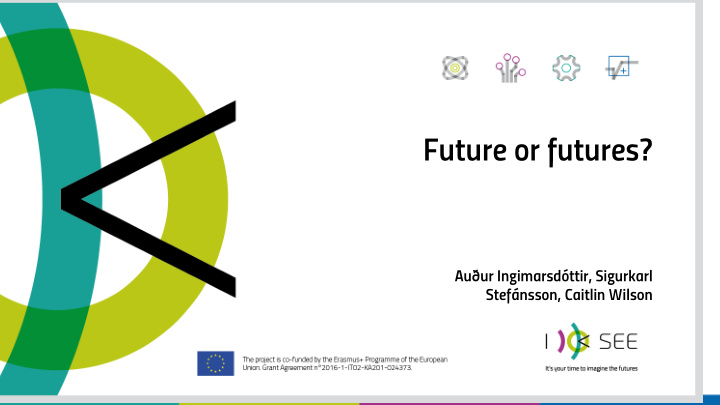



Future or futures? Au ð ur Ingimarsdóttir, Sigurkarl Stefánsson, Caitlin Wilson
I SEE project • In contemporary society, uncertainty prevails (Rosa, 2013) • The future is perceived as threatening, and science and technology are problematic (Benasayag & Schmit, 2005) • Young people have difficulty imagining a bright future (Sjøberg & Schreiner, 2010)
Goals of the project • To develop pedagogical methods for working with complex science issues in upper secondary school in ways that develop students‘ future imagination and agency.
Goals of the project Students gain: • Activities that make the topic personally relevant • New vocabulary • Ability to see possibilities • Belief in their ability to influence the future— or futures
Partners
What is possible? • This or that?
What are futures studies ? Academic area that works to: • Describe the future • Anticipate for possible futures • Plan for probable futures • Influence the future
Futures scientists say... • In science class we learn that the future is predictable. • In history class we learn that the future is unpredictable and chaotic. • From our parents, teachers and counselors we learn that our future is a choice .
But, the futures are actually many: • The future you expect if everything continues as is – momentum • The futures that could happen is something else happens – disruption • The futures we wish for and try to make true – agency
The cone of plausibility!
For Additional Information Dr. Peter Bishop Educator, Facilitator, Futurist Phone +1.281.433.4160 E-mail peter@teachthefuture.org Web teachthefuture.org houstonfutures.org
Recommend
More recommend